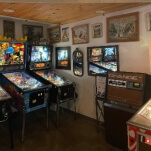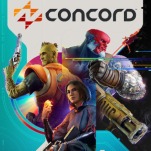Torment: Tides of Numenera Is Like Playing Through a Novel

It’s almost impossible to have a conversation about good stories in games without running smack into someone who extols the virtues of Planescape: Torment. Released in 1999, it was based on the incredibly weird Planescape setting for Dungeons & Dragons. Ripped right out of the blended fantasy and urban fiction narratives of the 1980s and 1990s, Planescape was the kind of setting where magical robots with a chip on their shoulder could grab a drink with angels who were beset by cultists who used self-mutilation as a form of prayer. I made that up, of course, but that’s the kind of ‘90s edgy-and-weirdness that Planescape and its giant multidimensional city of Sigil afforded for players and readers alike.
There hasn’t been anything that’s touched the weirdness of Planescape: Torment since its release. The resurgence of the “old school RPG” in the age of Kickstarter, meaning tactical role-playing games of the late 1990s and early 2000s, has given us a strange assortment of games that specifically throwback to experiences that just haven’t been available to players for a few years. Divinity: Original Sin, Pillars of Eternity and Wasteland 2 have all stepped up to the plate in terms of giving us new games in the family tree of Baldur’s Gate or the first two Fallout games, but neither of those franchises has the same kind of worldbuilding that Planescape: Torment did. Now, a few years after its massively-successful Kickstarter campaign, spiritual successor Torment: Tides of Numenera has tapped back into that strange and surreal landscape.
If you’re reading this to find out if it’s successful, I’ll just lay it out for you: It is. Torment does all of the things that its progenitor did so well. This is the kind of game where you can specialize in talking fast and thinking faster and never actually engage in physical combat. It’s also the kind of game where you can wield a healing sword and smash life energy into your teammates in combat encounters. You can recruit a team of psychic deserters into an eternal war, and you can help a woman whose eyes have been stolen by a swarm of nanites that rewrite reality if they’re released from their jar.
All of this is generated by a simple skill system: you have three pools of points (Might, Speed and Intellect), and you can use them to influence just about anything. A conversation, a fight, an inspection of a machine, or attempting to interrogate your own memory can all become a test of skill where you can deploy the abilities your character has trained to excel in.
Torment’s world is one of collapsed time and space, and it often takes those collapses to their extreme applications. It is imaginative, clever, and powerfully-written. The ways that stats can be used to influence the world are myriad, and they are all interesting.
This game also has the same problems that Planescape: Torment does. Years ago, I read this really brilliant article that described the game as an “interactive novel,” and I’ve never quite gotten over that assessment of the game. Planescape: Torment as a game is a mechanism through which you uncover its world, and Torment: Tides of Numenera is exactly the same way. I spent my 17-ish hours of playtime navigating dialogue, clicking basically every item in the world, and generally just trying to learn about how this universe worked. And that’s fine, and it’s good, but it also feels like I could just read a novel. In the same amount of time, I could read any number of things in the same aesthetic register as Torment: Brandon Graham’s Prophet comics; China Mieville’s Perdido Street Station; and I could even watch The Fifth Element.
I wrote another review recently where I wondered about games that lean into their similarity to other media, and I have the same feelings about Torment: if I encounter this thing that is like so much else, a game needs to give me a reason to spend my time here rather than doing any of those other things.
Don’t get me wrong. I think Torment: Tides of Numenera is a brilliant game, and I think that it ends up solving some of the trickiest problems of a game that wants a player to talk, trick or fight their way out of any encounter. The game will sometimes trigger a state called a Crisis, and all actions are taken in a turn-based way. Do you just want to run through a room? Gotta think tactically and parse your movement points out well. Want to sneak around these drones and deactivate them without attacking them? Good to go. Want to just run up and talk to someone before they punch you? You’re good to give that a shot. In giving up completely on real-time combat, the game actually opens up a lot of different, competing options for how the player can interact with the world. However, that also comes with a profound slowness. A Crisis takes forever to resolve, even if you’re just trying to sneak your way through a room, and it really shoots a magnetic bolt through the lively pacing that the game keeps up otherwise.








































